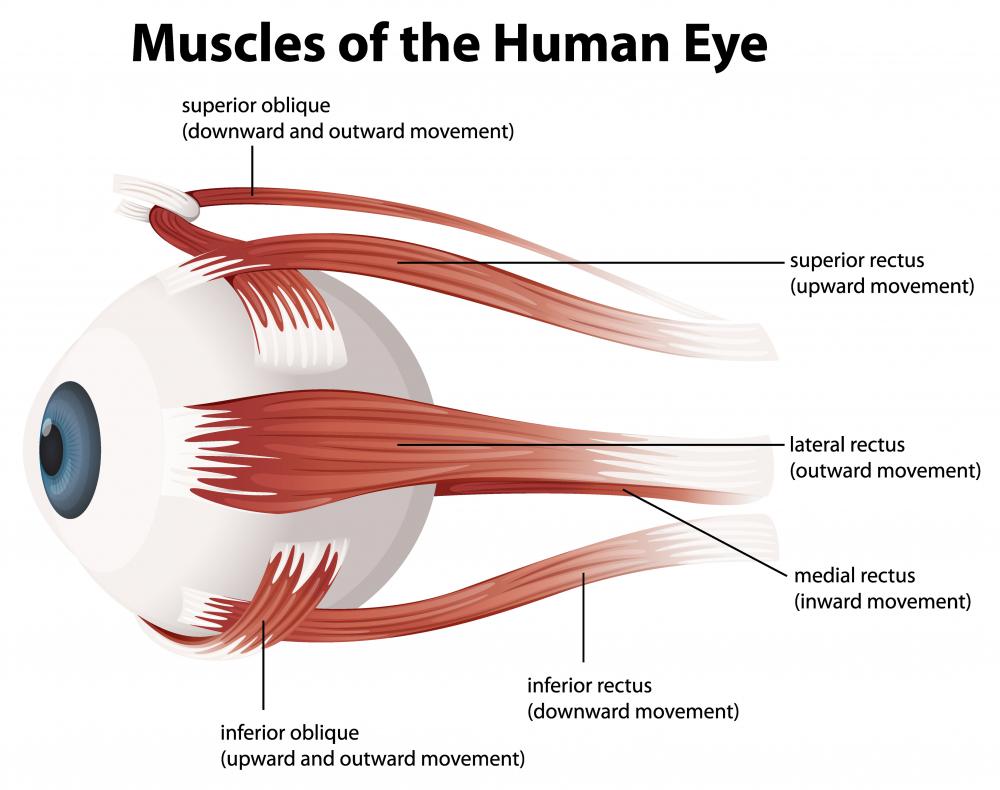At WiseGEEK, we're committed to delivering accurate, trustworthy information. Our expert-authored content is rigorously fact-checked and sourced from credible authorities. Discover how we uphold the highest standards in providing you with reliable knowledge.
What are Levator Muscles?
Levator muscles are a group of muscles that are distributed among different regions of the body but that share a similar function: elevation or upward lifting of the body part to which they attach. Found in the face, back, and pelvis, they elevate such structures as the eyelid, upper lip, shoulder blades, and even internal organs. Muscles included in this group are those of the face, the levator palpebrae superioris, levator labii superioris alaeque nasi, levator labii superioris, levator anguli oris; those of the thoracic region, the levator scapulae and levatores costarum; and those of the pelvis, the levator ani muscles.
In the face, the levator muscles include the levator palpebrae superioris, the muscle found over either eye. It is situated in the orbit or eye socket behind the eyeball and runs over the top of the eye to attach to the eyelid, causing the eyelid to pull back and upward when it contracts. The levator labii superioris alaeque nasi attaches to the outside of either nostril and the upper lip, and it is the muscle that enables a snarling facial expression. A larger muscle running vertically from the lower eyelid to the upper lip on either side of the face is the levator labii superioris, which elevates the upper lip independent of the nostrils. The final of the levator muscles of the face is the levator anguli oris, a deep muscle that attaches to either corner of the mouth and elevates the angle of the mouth, as in smiling.

Two levator muscles are found in the thoracic region of the upper torso: the levator scapulae and levatores costarum muscles. Situated in the back of the neck and upper back, the levator scapulae extends from the cervical vertebrae high in the neck to the top of the shoulder blades. Its role is to lift the shoulder blades, as in shrugging the shoulders.

Originating lower in the spine are the levatores costarum muscles, a series of small muscles linking the spine to the ribcage. These arise from all 12 thoracic vertebrae and the lowest of the cervical vertebrae, and each attaches to the top of the rib just below it. Together they elevate the thoracic ribcage, as in taking a deep breath.
The last of the levator muscles are the levator ani, a group of muscles in the pelvis that stretch from either side of the lower pelvis to the coccyx at the base of the spine, where they unite in the middle. Also known as the pelvic floor muscles, they include the iliococcygeus, pubococcygeus, and puborectalis muscles. Their role is to uphold the contents of the pelvis, supporting the reproductive, urinary, and digestive organs contained within.
AS FEATURED ON:
AS FEATURED ON:















Discuss this Article
Post your comments